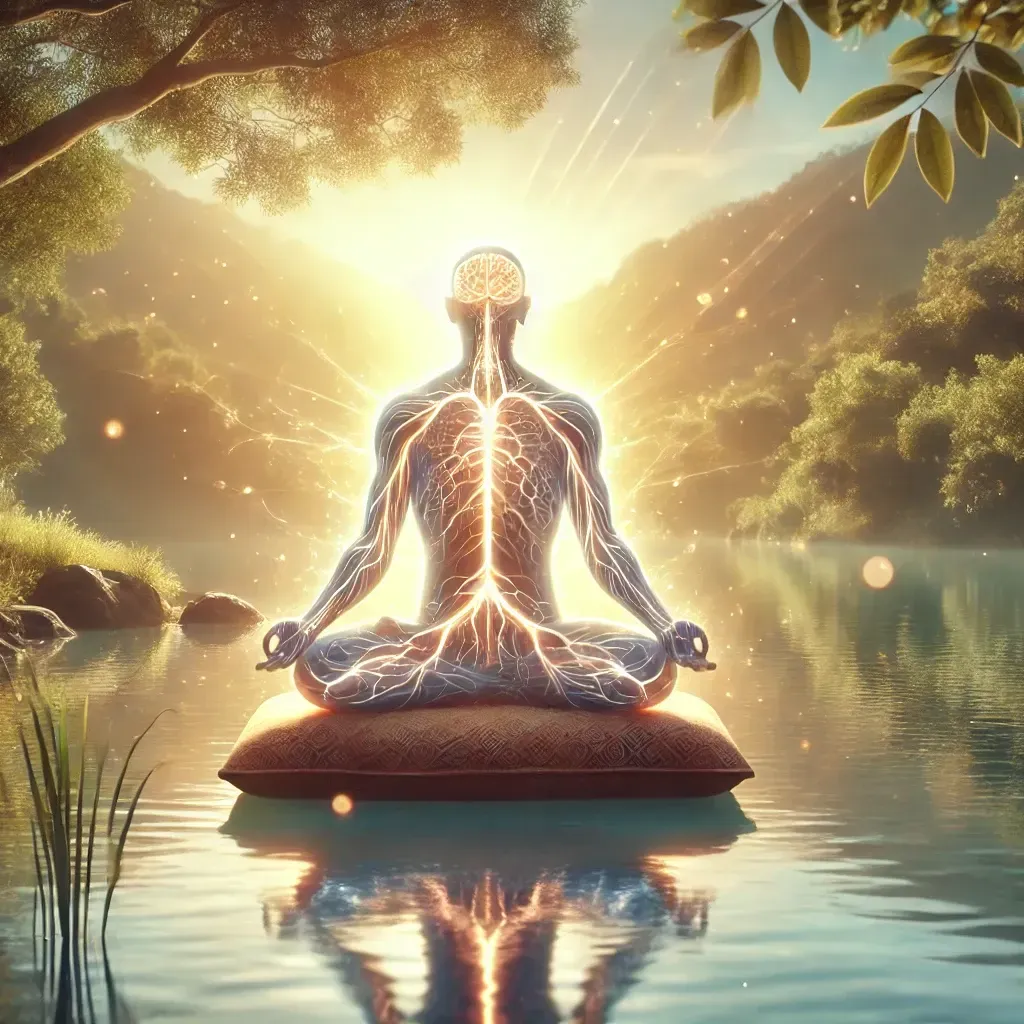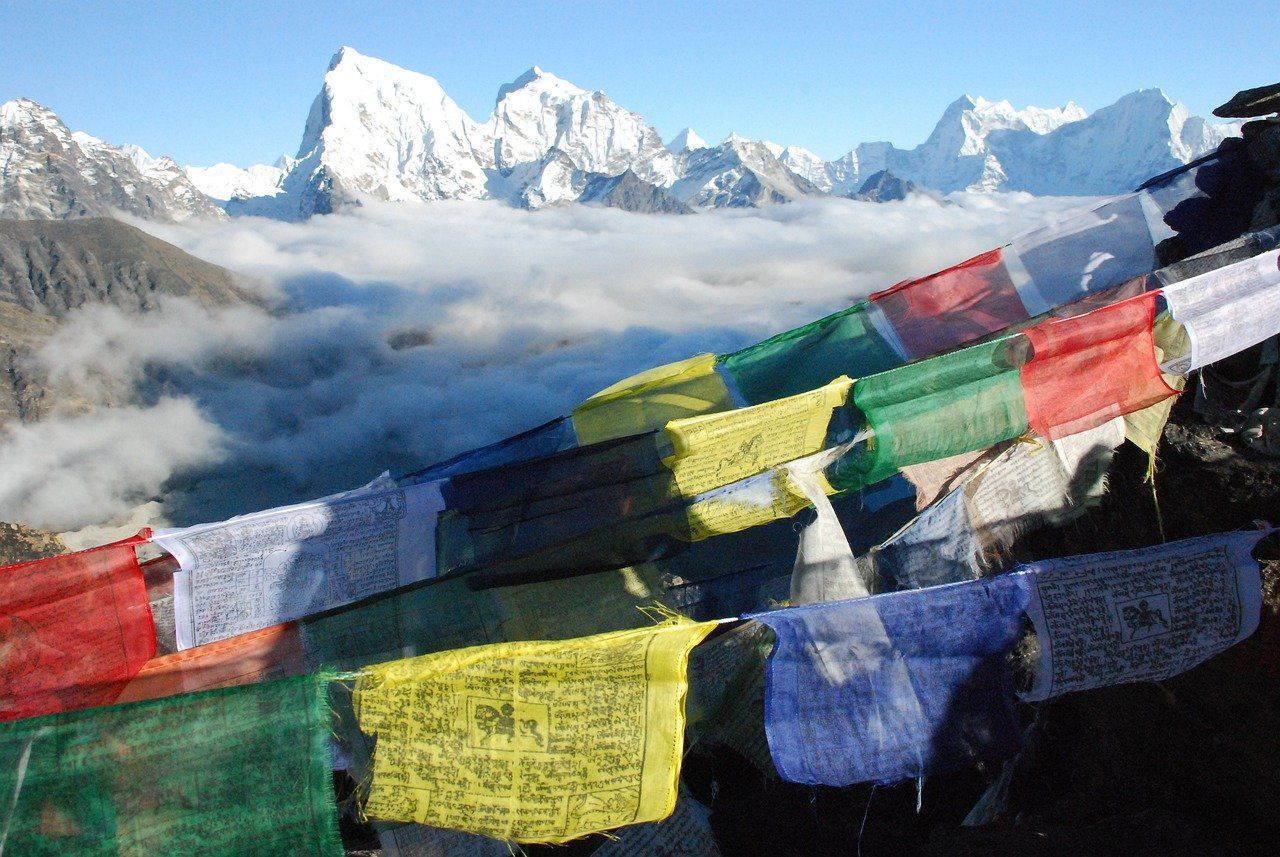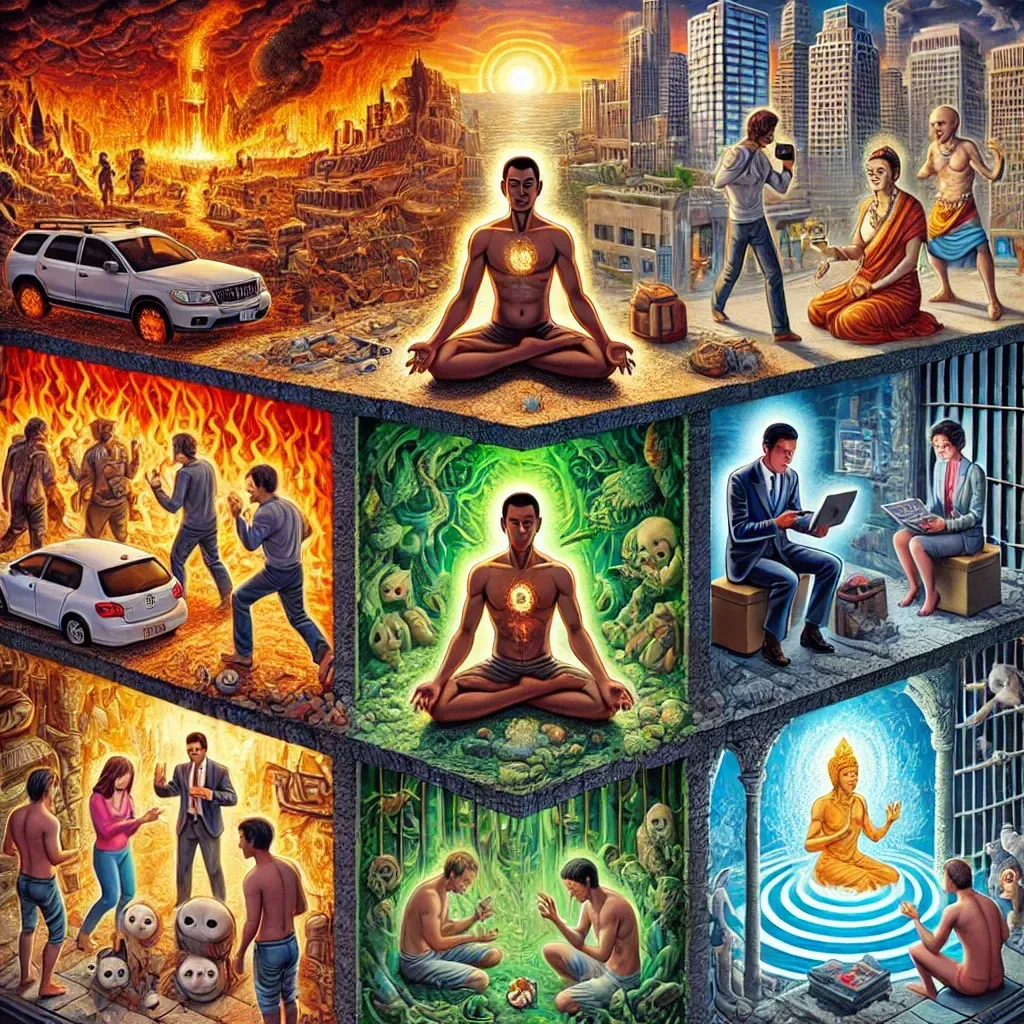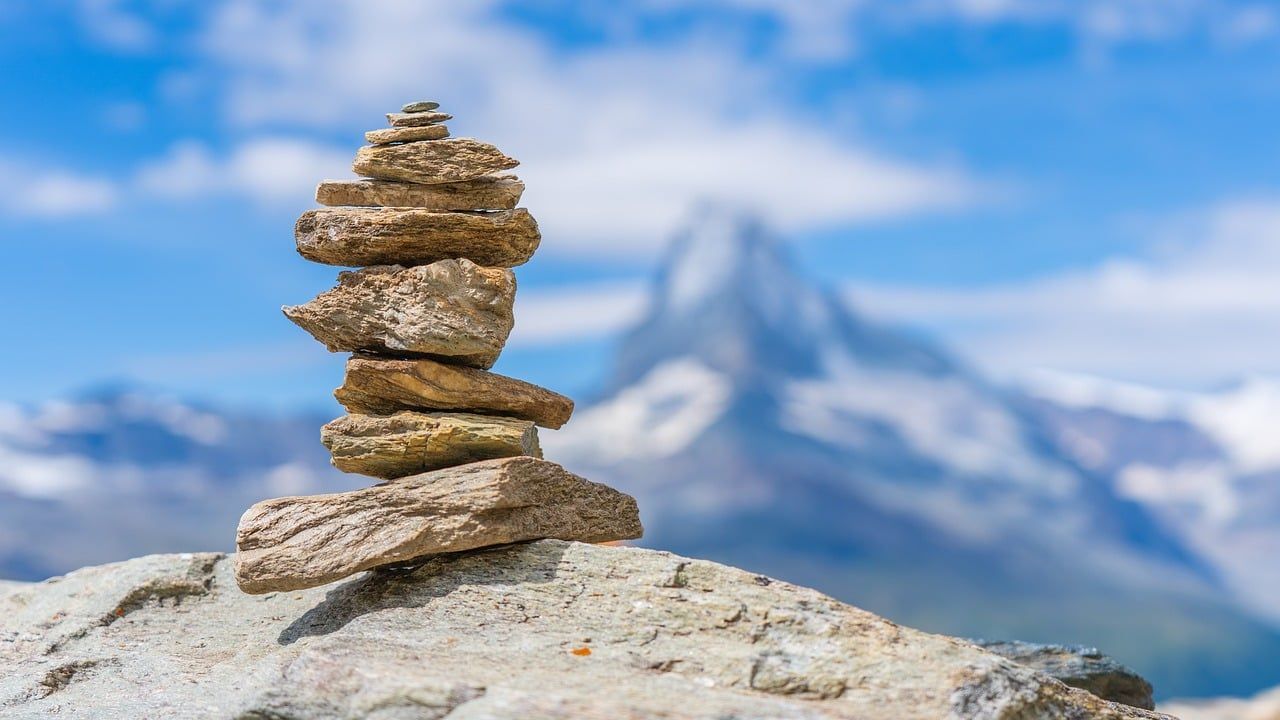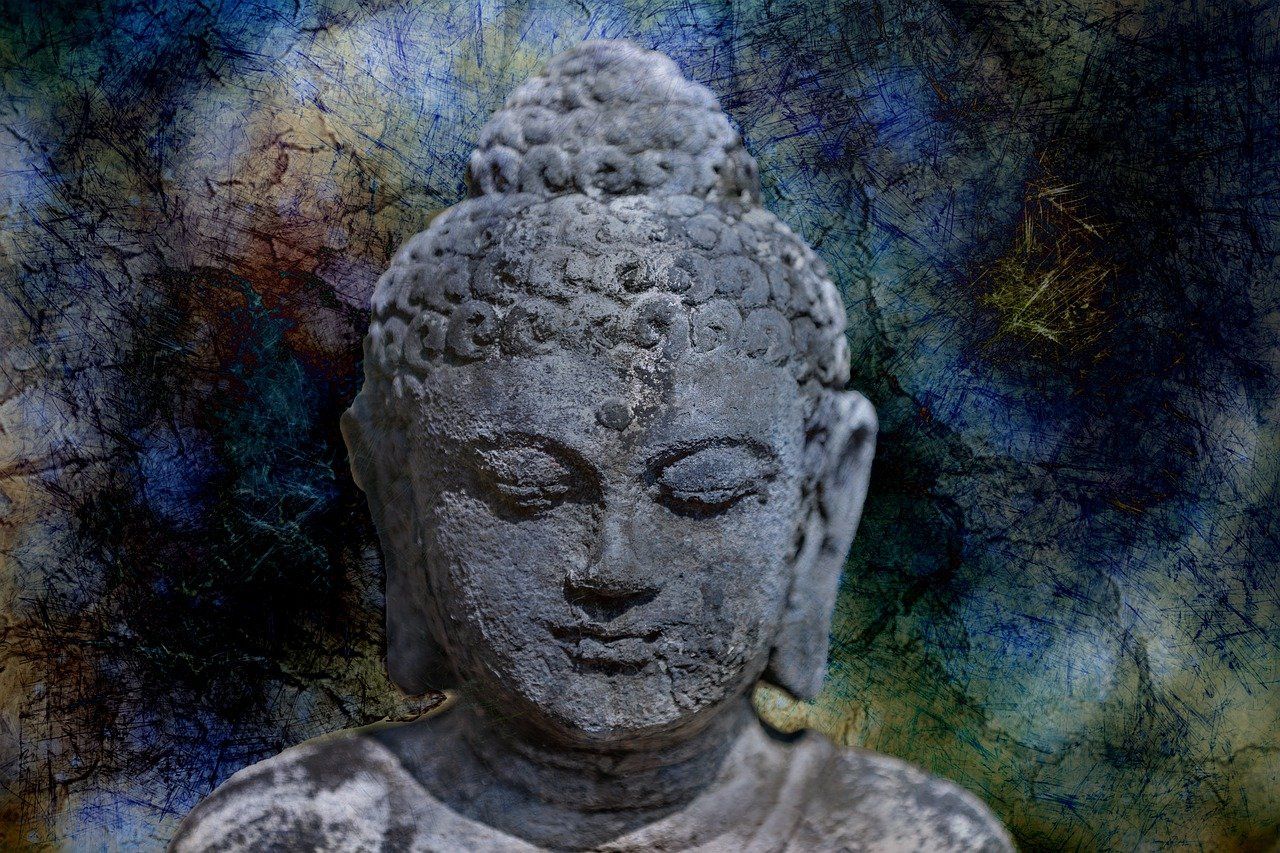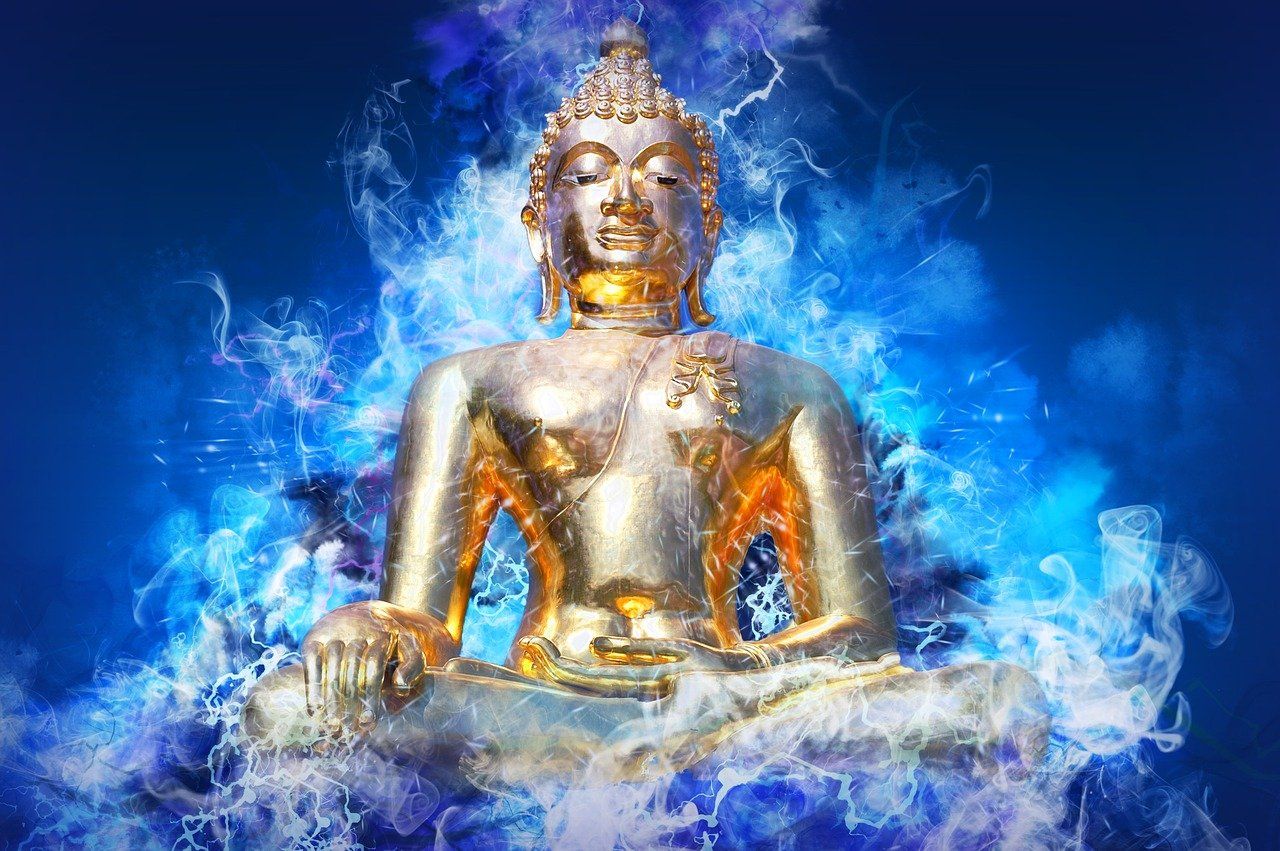4 Steps From Mindfulness To Mysticism – A Meditation Path To Enlightenment
A Complete Meditation Path To Enlightenment
In fact this meditation system claimed you didn’t even need to be a Buddhist to gain the incredible results and it stands by itself as a complete system to enlightenment, so it was controversial to say the least for the Buddhist establishment when it emerged in the 14th century. It makes total sense to me and it was something that you could experience for yourself that required no beliefs and relied primarily on your own efforts.
The system is called Mahamudra and it comes from the Kagyu tradition of Tibetan Buddhism and is known as the practice lineage which focuses predominantly on engaging in meditation rather than study or rituals; stripping everything down to the bare essentials. It’s especially concerned with resting in the nature of your own mind.
I didn’t know it at the time but this meditation system was the inspiration for what I now call The Way of Meditation which has since encouraged and helped hundreds of thousands of people around the world to start meditating and to deepen their practice. However I do not claim to be a Tibetan Buddhist teacher I have translated everything and adapted it to suit my own needs and modified it to appeal to the needs of a modern secular audience.
The first stage is to stabilise your attention through mindfulness meditation focussed on a particular object like the breath. This helps to overcome distraction, calm the mind and assists in the ability to control your own attention. The second stage is broadening that mindful awareness to include more and more of the present moment, and develop the flexibility to focus on what you want to focus on, again without distraction. Next is turning inward to investigate the nature of the awareness itself and lastly it’s learning to rest naturally in the nature of mind you have discovered through the direct experience of investigation.
The Four Stages Of Meditation From Mindfulness To Mysticism
1. Mindfulness With An Object
In brief mindfulness is necessary for everyone. After all in essence it’s simply paying attention to the present moment with the ability to not be distracted by judgements or over-thinking. In other words it’s the practice of a stable clear mind.
Mindfulness meditation allows detachment from the thinking mind which is judgemental and by nature disturbing. Once detached from the restlessness of the thinking mind, mindfulness allows our awareness to settle down to a naturally calm state of stillness and clarity.
“Ironically the more detached you become from thoughts, the more connected you are to the reality of the moment.”
Next once you have fixed your attention onto the object in a calm and focussed way you simply notice when you are distracted and getting caught in thinking and gently guide your attention back to your object. You will have to do this many times in a session. You are not failing when you get distracted, you are failing when you do not notice that you are distracted and remain lost in thoughts for large chunks of time.
“Thoughts and feelings come and go like clouds in a windy sky, conscious breathing is my anchor.” ~ Zen master Thich Naht Hanh
For more instructions on mindfulness meditation CLICK HERE
2. Open Monitoring Mindfulness
“Just go on becoming more and more aware, and you will find your life changing for the better in every possible dimension. It will bring great fulfilment.” ~ Osho
“There’s nothing in particular to focus on but don’t get distracted.”
“Mindfulness is the aware, balanced acceptance of the present experience. It isn’t more complicated than that. It is opening to or receiving the present moment, pleasant or unpleasant, just as it is, without either clinging to it or rejecting it. “ ~ Sylvia Boorstein
At this stage we are the silent witness to the contents of our present experience. From the thoughts passing through our mind, the sensations of heat or cold, the inner feelings of joy or sadness and the objects we can see and hear etc.
The next stage we turn our attention inward to recognise exactly what is doing the silent witnessing, we turn awareness onto itself.
3. Inquiry Into The Nature Of Awareness
“People are scared to empty their minds fearing that they will be engulfed by a void. What they don’t realize is that their own mind is the void.” ~ Zen Master Huang Po
When we look inside with a clear, steady focus, the mind we see is transparent, spacious, and open.
This union of a transparent emptiness and conscious awareness is what The Dalai Lama means when he says the heart of all meditation practice is innermost awareness. This union of emptiness and clarity is the fundamental base of all our experiences and a universal refuge for all people in the midst of an ever changing world.
“Saints and mystics throughout history have adorned their realisations with different names and given them different faces and interpretations, but what they are all fundamentally experiencing is the essential nature of the mind.” ~ Tibetan Buddhist Master
This ground of being is not only empty, clear and open it’s also conscious, aware and intelligent. That union is the essential nature of who you are. The union of emptiness and clarity.
4. Resting In The Nature Of Awareness

“Banish all hope and fear and rest in the unshakable certainty that the eternal simplicity of awareness is itself all that needs to be done to be an Awakened Being. That is the Perfect Way of Meditation , in which peace, love and wisdom will flourish without effort.” ~ Dilgo Khyentse Rinpoche
“ The eye through which I see God is the same eye through which God sees me. My eye and God’s eye are one eye, one seeing, one knowing, one love.” ~ Christian Mystic, Meister Eckhart
This nature is your true unchanging identity and yet it cannot be pinned down or grasped intellectually. It’s especially important not to be satisfied with a conceptual understanding but to keep being mindful, looking within and continually deepen your direct experience of this essence of awareness. In fact whenever you do think you’ve “got it” let that go too and just go on resting in a non conceptual way into your own nature.
“Meditation, then, is bringing the mind home, to our true self.”
Simply rest within your own nature of awareness and you will soon discover its qualities of deep peace, creative energy, bliss and a radiance of love toward everyone in your/its presence.
Meditation is resting in a natural state.
Not doing anything.
Not getting anywhere.
I get familiar with abiding calmly in my own nature.
I discover there is nothing to find.
And nothing blocking me.
I simply am here.
Already free.
Written By Chad Foreman
Chad is the founder of The Way of Meditation and has been teaching meditation since 2003 and is determined to bring authentic meditation practices into the lives of millions of people in the modern world. Chad is a former Buddhist monk who spent 6 years living in a retreat hut studying and practicing meditation full time. Chad now offers Private Online Meditation Coaching
and has also developed an incredible course called The 21 Day Meditation Challenge
to help guide people gradually from the basics of mindfulness and relaxation to profound states of awareness.
Try A Guided Meditation Enquiring Into The Nature Of Mind
Get A FREE
Guided Meditation Series
with Chad Foreman
